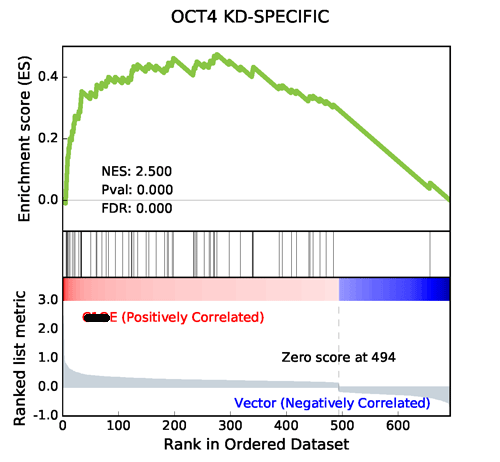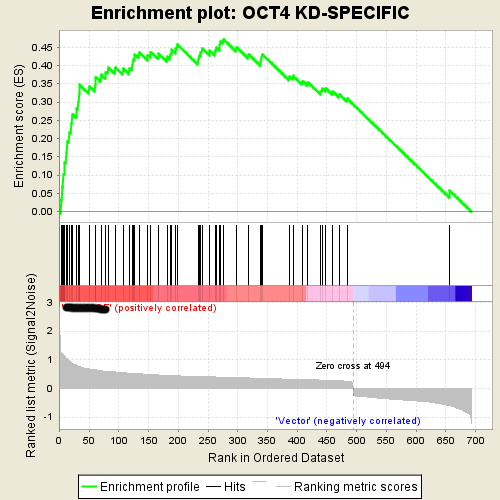GSEAPY: Gene Set Enrichment Analysis in Python.

The main documentation for GSEAPY can be found at https://pythonhosted.org/gseapy
An example to use gseapy, please click here: Example
Release notes : https://github.com/BioNinja/gseapy/releases
It's used for convenient GO enrichments and produce publishable quality figures in python.
GSEAPY could be used for RNA-seq, ChIP-seq, Microarry data.
Gene Set Enrichment Analysis (GSEA) is a computational method that determines whether an a priori defined set of genes shows statistically significant, concordant differences between two biological states (e.g. phenotypes).
The full GSEA is far too extensive to describe here; see
GSEA documentation for more information.
Enrichr is open source and freely available online at: http://amp.pharm.mssm.edu/Enrichr .
I would like to use Pandas to explore my data, but I did not find a convenient tool to do gene set enrichment analysis in python. So, here is my reason:
- Running inside python console without switch to R!!!
- User friendly for both wet and dry lab usrers.
- Produce pubilishable figures.
- Perform batch jobs easy.
- Easy to use in Bash shell.
This is an example of GSEA desktop application output
Using the same data from GSEA, GSEAPY reproduce the example above.
Using replot module will reproduce the same figure for GSEA Java desktop outputs

Generated by GSEAPY
GSEAPY figures are supported by all matplotlib figures formats.
You can modify GSEA plots easily in .pdf files. Please Enjoy.
The powerfull module will enable you perform gene set enrichment analysis extreamly easily.
You Could submit batch jobs to Enrichr Server
The only thing you need to prepeare is a gene list file in txt format(one gene id per row), or a python list object.
Note: Enrichr uses a list of Entrez gene symbols as input. You should convert all gene names to uppercase.
For example, both a list object and txt file are supported for enrchr API
# if you perfer to run gseapy.enrchr() inside python console, you could assign a list object to
# gseapy like this.
gene_list = ['SCARA3', 'LOC100044683', 'CMBL', 'CLIC6', 'IL13RA1', 'TACSTD2', 'DKKL1',
'CSF1', 'CITED1', 'SYNPO2L']# an alternative way is that you could provide a gene list txt file which looks like this:
with open('data/gene_list.txt') as genes:
print(genes.read())
CTLA2B
SCARA3
LOC100044683
CMBL
CLIC6
IL13RA1
TACSTD2
DKKL1
CSF1
CITED1
SYNPO2L
TINAGL1
PTX3# if you have conda(the recommended way)
$ conda install -c bioconda gseapy
# for windows users
$ conda install -c bioninja gseapy
# or use pip
$ pip install gseapy$ pip install git+git://github.com/BioNinja/gseapy.git#egg=gseapy- Python 2.7 or 3.3+
- Numpy
- Pandas
- Matplotlib
- Beautifulsoup4
- Requests(for enrichr API)
You may also need to install lxml, html5lib, if you could not parse xml files.
GSEAPY has four subcommands: replot, call, prerank, enrichr.
The replot module reproduce GSEA desktop version results. The only input for GSEAPY is the location to GSEA results.
The call module produce GSEAPY results. The input requries a txt file(FPKM, Expected Counts, TPM, et.al), a cls file,
and gene_sets file in gmt format.
The prerank module produce GSEAPY results. The input expects a pre-ranked gene list dataset with correlation values, which in .rnk format,
and gene_sets file in gmt format. prerank module is an API to GSEA pre-rank tools.
All input files' formats are identical to GSEA desktop version.
See GSEA documentation for more information.
The enrichr module will using enrichr API online. It runs very fast and generates results in txt format.
You should convert all gene symobl names to uppercase first.
# An example to reproduce figures using replot module.
$ gseapy replot -i ./Gsea.reports -o test
# An example to compute using gseapy call module
$ gseapy call -d exptable.txt -c test.cls -g gene_sets.gmt -o test
# An example to compute using gseapy prerank module
$ gseapy prerank -r gsea_data.rnk -g gene_sets.gmt -o test
# An example to use enrichr api
# see details of -g parameter below, -d parmameter is optional
$ gseapy enrichr -i gene_list.txt -g KEGG_2016 -d pathway_enrichment -o test- Prepare expression.txt, gene_sets.gmt and test.cls required by GSEA, you could do this
import gseapy
# An example to reproduce figures using replot module.
gseapy.replot(indir='./Gsea.reports',outdir='test')
# calculate es, nes, pval,fdrs, and produce figures using gseapy.
gseapy.call(data='expression.txt', gene_sets='gene_sets.gmt', cls='test.cls', outdir='test')
# using prerank tool
gseapy.prerank(rnk='gsea_data.rnk', gene_sets='gene_sets.gmt', outdir='test')- If you perfer to use assign Dataframe, dict, list to gseapy, you could do this
# assign dataframe, and use enrichr libary data set 'KEGG_2016'
expression_dataframe = pd.DataFrame()
sample_name = ['A','A','A','B','B','B'] # always only two group
# assign gene_sets parameter with enrichr library name or gmt file on your local computor.
gseapy.call(data=expression_dataframe, gene_sets='KEGG_2016', cls= sample_names, outdir='test')
# using prerank tool
gene_ranked_dataframe = pd.DataFrame()
gseapy.prerank(rnk=gene_ranked_dataframe, gene_sets='KEGG_2016', outdir='test')- For
enrichr, you could assign a list object or a txt file
# assign a list object to enrichr
l = ['SCARA3', 'LOC100044683', 'CMBL', 'CLIC6', 'IL13RA1', 'TACSTD2', 'DKKL1', 'CSF1',
'SYNPO2L', 'TINAGL1', 'PTX3', 'BGN', 'HERC1', 'EFNA1', 'CIB2', 'PMP22', 'TMEM173']
gseapy.enrichr(gene_list=l, description='pathway', gene_sets='KEGG_2016', outdir='test')
# or a txt file path.
gseapy.enrichr(gene_list='gene_list.txt', description='pathway', gene_sets='KEGG_2016',
outdir='test', cutoff=0.05, format='png' )To see the full list of gseapy supported gene set librarys, please click here: Library
Or use get_library_name function inside python console.
#see full list of latest enrichr library names, which will pass to -g parameter:
names = gseapy.get_library_name()
# show top 20 entries.
print(names[:20])
['Genome_Browser_PWMs',
'TRANSFAC_and_JASPAR_PWMs',
'ChEA_2013',
'Drug_Perturbations_from_GEO_2014',
'ENCODE_TF_ChIP-seq_2014',
'BioCarta_2013',
'Reactome_2013',
'WikiPathways_2013',
'Disease_Signatures_from_GEO_up_2014',
'KEGG_2016',
'TF-LOF_Expression_from_GEO',
'TargetScan_microRNA',
'PPI_Hub_Proteins',
'GO_Molecular_Function_2015',
'GeneSigDB',
'Chromosome_Location',
'Human_Gene_Atlas',
'Mouse_Gene_Atlas',
'GO_Cellular_Component_2015',
'GO_Biological_Process_2015',
'Human_Phenotype_Ontology',]If you would like to report any bugs when you running gseapy, don't hesitate to create an issue on github here, or email me: fangzhuoqing@sibs.ac.cn
Visit the document site at https://pythonhosted.org/gseapy
